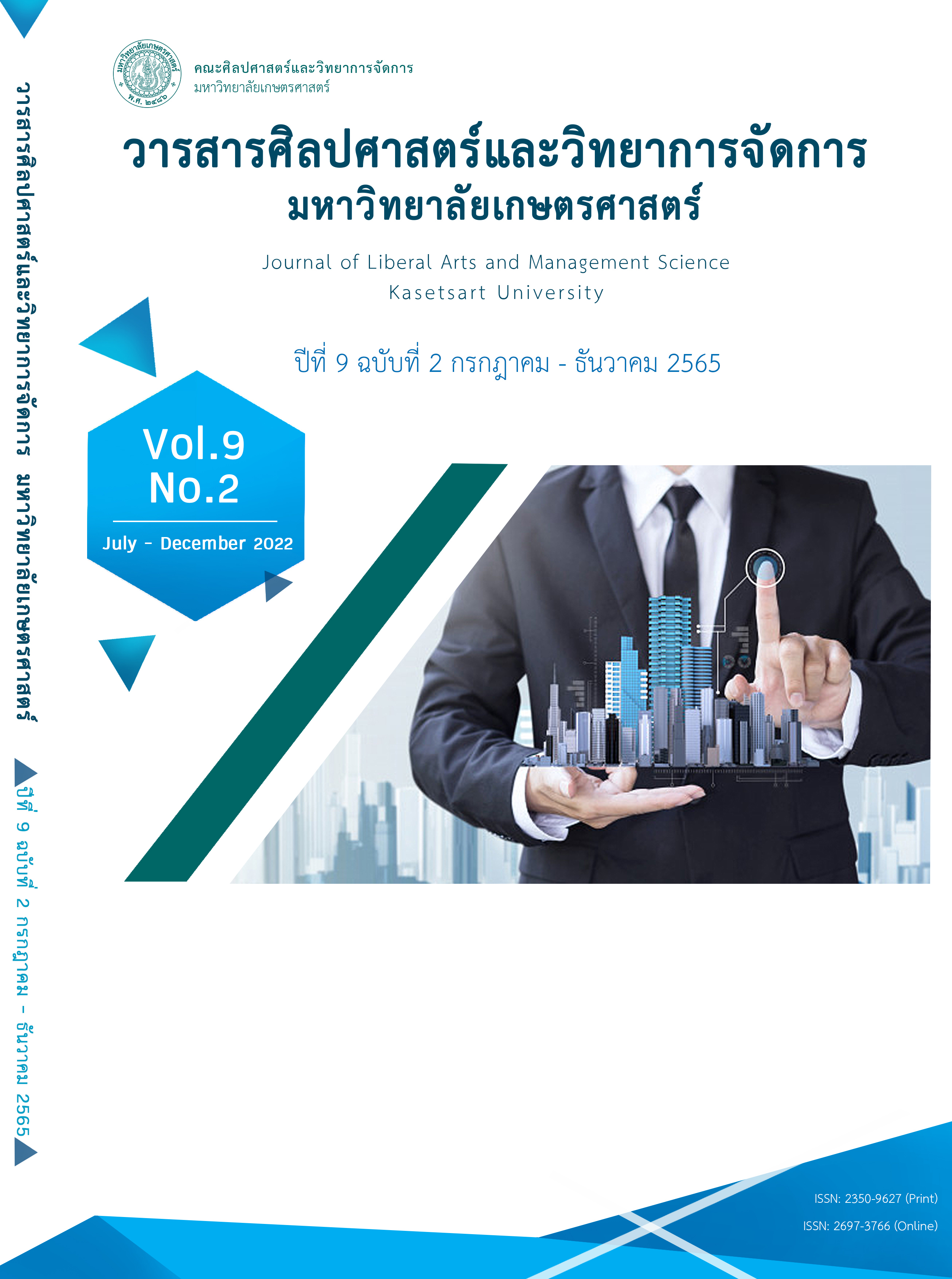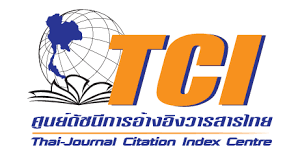FACTORS INFLUENCING BEHAVIORAL INTENTION AND BEHAVIOR OF USING ROBOTIC PROCESS AUTOMATION (RPA) APPLICATION IN ACCOUNTING: A CONCEPTUAL FRAMEWORK
Keywords:
behavioral intentions and use behavior, robotic process automation, accountingAbstract
This paper aims to develop an educational conceptual framework for factors affecting behavioral intentions and behavior of using Robotic Process Automation (RPA) application in accounting by querying and synthesizing academic articles from electronic journal databases. The results of the study found that the Unified Adoption and Use of Technology (UTAUT) model described behavioral intention and the behavior of using the application as factors that affect behavioral intentions and use behavior, including, social influence, performance expectations, facilitating conditions, and effort expectations. In addition, personal differentiation factors motivate different behavioral intentions: gender, age, experience, and willingness to use them. The researchers added anti-technology factors as past researchers found that accountants were concerned about being replaced by RPA and their work roles changing. This has led to opposition to the use of autonomous robots, which may lead to reduced adoption and use. The conceptual framework derived from this paper encourages the researchers to explore the factors affecting behavioral intentions and the use of RPA in accounting to help executives use them as a guideline for developing, improving and promoting behavioral intentions to contribute to the enhancement of accounting staff to the organization and optimizing the presentation of accounting information to the stakeholders of the entity and further enhancing academic outcomes.
References
Abu-Taieh, E. M., AlHadid, I., Abu-Tayeh, S., Masa’deh, R. e., Alkhawaldeh, R. S., Khwaldeh, S., & Alrowwad, A. a. (2022). Continued Intention to Use of M-Banking in Jordan by Integrating UTAUT, TPB, TAM and Service Quality with ML. Journal of Open Innovation: Technology, Market, and Complexity, 8(3), 120.
Alkhowaiter, W. A. (2022). Use and behavioural intention of m-payment in GCC countries: Extending meta-UTAUT with trust and Islamic religiosity. Journal of Innovation and Knowledge, 7(4), 100240.
Asatiani, A., Penttinen, E., Ruissalo, J., & Salovaara, A. (2020). Knowledge workers’ reactions to a planned introduction of robotic process automation—empirical evidence from an accounting firm. In R. Hirschheim, A. Heinzl, & J. Dibbern (Eds.), Information systems outsourcing: The era of digital transformation (pp. 413-452).
Axson, D. (2015). Finance 2020: Death by digital. Retrieved October 10,2022, from https://www.accenture. com/t20150902T015110__w__/us-en/_acnmedia/ Accenture/Conversion-Assets/DotCom/Documents/Global/PDF/Dualpub_21/ Accenture-Finance-2020-PoV. pdf, vom, 21, 2016.
Bagozzi, R.P. (2007). The legacy of the technology acceptance model and a proposal for a paradigm shift. Journal of the Association for Information Systems, 8(4), 244-254.
Cabrera-Sánchez, J. P., & Villarejo-Ramos, Á. F. (2020). Acceptance and use of big data techniques in services companies. Journal of Retailing and Consumer Services, 52, 101888.
Cooper, L. A., Holderness, D. K., Sorensen, T. L., & Wood, D. A. (2019). Robotic process automation in public accounting. Accounting Horizons, 33(4), 15-35.
Craig, J. J. (2014). Introduction to robotics : mechanics and control (3rd ed.) [Non-fiction]. Pearson.
Dahiyat, A. (2022). Robotic process automation and audit quality. Corporate Governance and Organizational Behavior Review, 6(1), 160-167.
Deloitte. (2016). The robots are here. Retrieved October 10,2022, from https://www2.deloitte.com/content/dam/Deloitte/ch/Documents/innovation/ch-en-innovation-robots-are-here-digital-workforce.pdf
Deloitte. (2018). Internal Controls Over Financial Reporting Considerations for Developing and Implementing Bots สื Retrieved October 10,2022, from https://www2. deloitte.com /content/dam/Deloitte/us/Documents/audit/us-audit-internal-controls-over-financial-reporting-
considerations-for-developing-and-implementing-bots.pdf
Fakhri, M. M., Fadhilatunisa, D., Yuanita, B., & Sari, N. R. (2022). The use of the extended technology acceptance model (TAM) to measure behavioral intention users of zahir accounting software. Assets: Jurnal Ekonomi, Manajemen Dan Akuntansi, 1(1), 107-123.
Fernandez, D., & Aman, A. (2018). Impacts of robotic process automation on global accounting services. Asian Journal of Accounting and Governance, 9(1), 127-140.
Inder, S., Sood, K., & Grima, S. (2022). Antecedents of behavioural intention to adopt internet banking using structural equation modelling. Journal of Risk and Financial Management, 15(4), 157.
Jain, G., Kamble, S. S., Ndubisi, N. O., Shrivastava, A., Belhadi, A., & Venkatesh, M. (2022). Antecedents of Blockchain-Enabled E-commerce Platforms (BEEP) adoption by customers–A study of second-hand small and medium apparel retailers. Journal of Business Research, 149, 576-588.
Jedrzejka, D. (2019). Robotic process automation and its impact on accounting [Article]. Zrobotyzowana automatyzacja procesów i jej wpływ na rachunkowość., 105(161), 137-166.
Kamble, S., Gunasekaran, A., & Arha, H. (2019). Understanding the Blockchain technology adoption in supply chains-Indian context. International Journal of Production Research, 57(7), 2009-2033.
Kaya, C. T., Turkyilmaz, M., & Birol, B. (2019). Impact of RPA Technologies on Accounting Systems. RPA Teknolojilerinin Muhasebe Sistemleri Üzerindeki Etkisi, (82), 235-249.
Khongthong, K., & Potongsangarun, R. (2020). Behavioral intentions using technology of B Genneration and X Generation. Journal of Suvarnabhumi Institute of Technology (Humanities and Social Sciences), 6(2), 43-57.
Kim, J., Seo, J., Zo, H., & Lee, H. (2020). Why digital goods have not replaced traditional goods: the case of e-books. Journal of Enterprise Information Management, 34(3), 793-810.
Lai, P. C. (2017). The literature review of technology adoption models and theories for the novelty technology. JISTEM-Journal of Information Systems and Technology Management, 14, 21-38.
Le Clair, C., Cullen, A., & King, M. (2017). The Forrester Wave™: Robotic Process Automation, Q1 2017. Forrester Research.
Martinko, M. J., Zmud, R. W., & Henry, J. W. (1996). An attributional explanation of individual resistance to the introduction of information technologies in the workplace. Behaviour & Information Technology, 15(5), 313-330.
Mohamed, S. A., Mahmoud, M. A., Mahdi, M. N., & Mostafa, S. A. (2022). Improving efficiency and effectiveness of robotic process automation in human resource management. Sustainability, 14(7), 3920.
Osman, C.-C. (2019). Robotic process automation: Lessons learned from case studies. Informatica economica, 23(4).
Paula Monteiro, A., Vale, J., Leite, E., Lis, M., & Kurowska-Pysz, J. (2022). The impact of information systems and non-financial information on company success. International Journal of Accounting Information Systems, 45, 100557.
Petersen, B. L., & Rohith, G. P. (2017). How robotic process automation and artificial intelligence will change outsourcing. Brussels, Mayer Brown.
Phornlaphatrachakorn, K. (2019). Internal control quality, accounting information usefulness, regulation compliance, and decision-making success: evidence from canned and processed foods businesses in Thailand. International Journal of Business, 24(2), 198-215.
Rotchanakitumnuai, S. (2019). Mobile banking acceptance for continuing usage of Thai Commercial Banks. Journal of Business Administration The Association of Private Higher Education Institutions of Thailand, 8(2), 10-21.
Rozario, A. M., & Vasarhelyi, M. A. (2018). How Robotic process automation is transforming accounting and auditing. CPA Journal, 88(6), 46-49.
Sakdiwong, S., & Saraphat, S. (2021). Casual factors of job efficiency for back office workers from the implementation of Robotic Process Automation (RPA) Technology : A Case Study of Automotive Assembly Plant. Journal of Accountancy and Management, 14(2), 1-22.
Salahshour, M., Dahlan, H., Iahad, N., Nilashi, M., & Zakaria, R. (2014). Assessing the factors that affect adoption of social research network site for collaboration by researchers using multicriteria approach. Journal of Theoretical and Applied Information Technology, 10.
Sankaran, R., & Chakraborty, S. (2022). Factors impacting mobile banking in India: Empirical approach extending UTAUT2 with perceived value and trust. IIM Kozhikode Society & Management Review, 11(1), 7-24.
Seasongood, S. (2016). Not just for the assembly line: A case for robotics in accounting and finance. Finan. Exec., 32(1), 31-39.
Sivaretinamohan, R., & Sujatha, S. (2022). Behavioural intention towards adoption of robotic accounting for a profitable leading digital transformation. 2022 1st International Conference on Electrical, Electronics, Information and Communication Technologies, ICEEICT 2022.
Syed, R., Suriadi, S., Adams, M., Bandara, W., Leemans, S. J. J., Ouyang, C., ter Hofstede, A. H. M., van de Weerd, I., Wynn, M. T., & Reijers, H. A. (2020). Robotic Process Automation: Contemporary themes and challenges. Computers in Industry, 115, 103162.
Tucker, I. (2017). The Blueprint for Continuous Accounting. Strategic Finance, May(1), 41-49.
Venkatesh, V., Morris, M. G., Davis, G. B., & Davis, F. D. (2003). User acceptance of information technology: Toward a unified view. MIS Quarterly, 425-478.
Wewerka, J., Dax, S., & Reichert, M. (2020). A user acceptance model for Robotic Process Automation. Proceedings - 2020 IEEE 24th International Enterprise Distributed Object Computing Conference, EDOC 2020.
Wewerka, J., & Reichert, M. (2021). Robotic Process Automation in the Automotive Industry - Lessons Learned from an Exploratory Case Study. Lecture Notes in Business Information Processing.
Ye, T., Xue, J., He, M., Gu, J., Lin, H., Xu, B., & Cheng, Y. (2019). Psychosocial factors affecting artificial intelligence adoption in health care in China: Cross-Sectional Study. J Med Internet Res, 21(10), e14316.
Zhai, H., Yang, X., Xue, J., Lavender, C., Ye, T., Li, J.-B., Xu, L., Lin, L., Cao, W., & Sun, Y. (2021). Radiation oncologists’ perceptions of adopting an artificial intelligence–assisted contouring technology: Model development and questionnaire study. Journal of Medical Internet Research, 23(9), e27122.
Zhao, Y., & Bacao, F. (2021). How does the pandemic facilitate mobile payment? An investigation on users’ perspective under the COVID-19 pandemic. International journal of environmental research and public health, 18(3), 1016.






